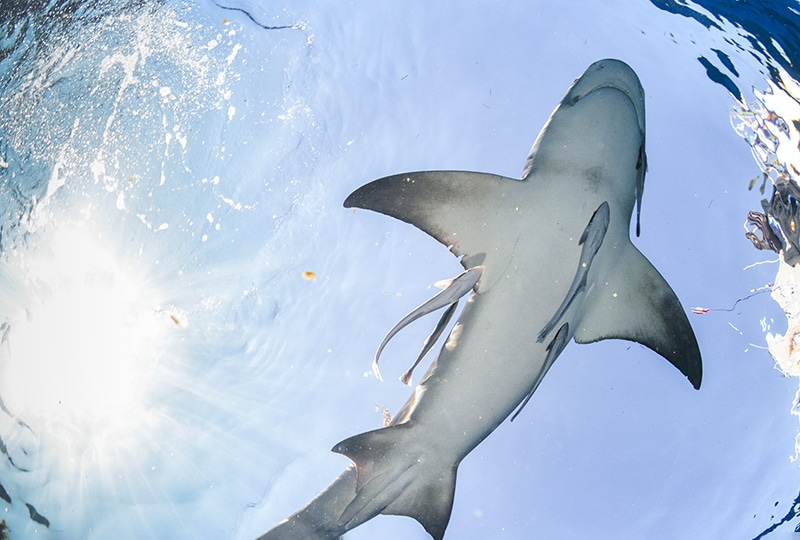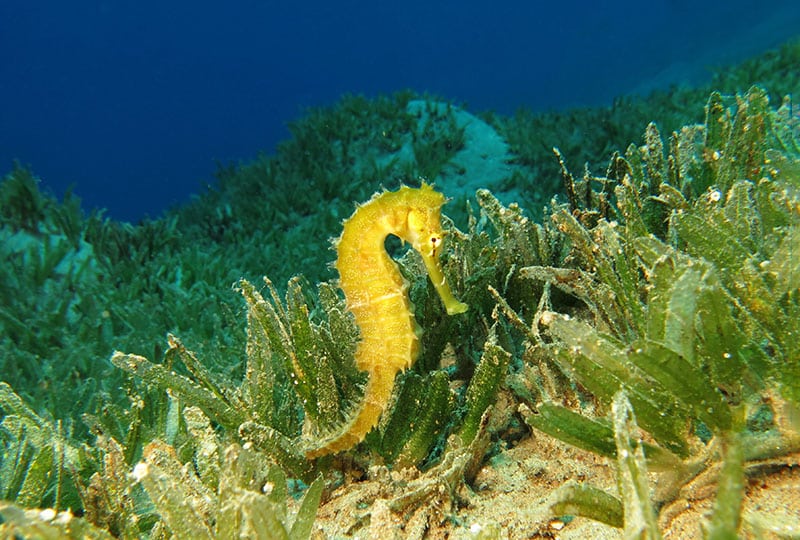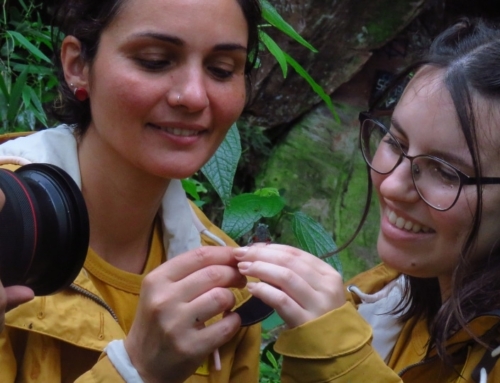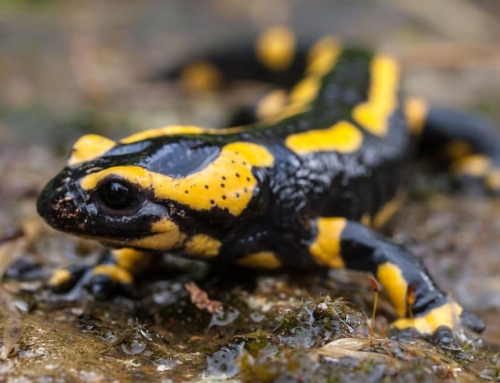With public interest in environmental issues higher than it has been for years, it is important to maintain the momentum and build on people’s understanding and motivation to protect our natural world. Nina Seale explores how environmental films have been used to engage people to make a difference for the environment.
On the deck of a beautiful French ship, sailors are sitting completely still, watching a swallow resting on the planks.
This is the memorable closing shot from a short film called Le tombeau des épuisés (Tomb of the exhausted), surprise winner of the Audience Favourite at the Good Natured Film Festival. With its slow pace, hushed French narration and subtle music, it didn’t feel like a typical conservation film. However, its power lay in its ability to remind the audience of their own experiences; the connections we create with nature, no matter where we are.
When was the last time you were moved by a film or documentary? Can you think of any which have made you reconsider your beliefs, or change your behaviour? What about environment films- when you think of an impactful environment film, what do you think of? Why do you think it made an impact? What is impact?
So… what is impact?
One answer would be change- a beautiful, moving film is distributed to a wide and diverse audience who will duly be inspired and care enough about the cause to take action.

Shark in the Bahamas. © iStock
But impact is complicated to plan, predict and measure. A film’s purpose could be to bring an unknown issue to the global spotlight, in which case reach and public sympathy would count as effective impact (e.g. Virunga shedding light on the threats of war, poaching and oil exploration on the Democratic Republic of Congo’s Virunga National Park). But if a film is re-addressing a well-known issue, the impact would be further along the chain: looking at creating systems change (e.g. Blue Planet II inspiring viewers to move away from single-use plastics).
An example from Synchronicity Earth is our short film Bringing Conservation to Life, which was launched at our ten-year anniversary event to celebrate the impact of ten years of our work with our partners with our supporters.
As well as strengthening our relationships with our supporters and conveying to them the impact of our work, we had a secondary impact plan of using the film to introduce new supporters to our approach and the kind of organisations we work with, which is reflected partly by the number of new supporters we have taken on since the film’s release, as it has been viewed by visitors to our website on our homepage and in events and meetings with new supporters.
So, when creating their story and impact plan, filmmakers need to truly understand what change would look like, who would implement it, and how, in order to make a film that will really make a difference.
The right audience
An important part of this is audience. Is the film aiming for widespread behaviour change (a larger, more diverse audience) or specific actions such as policy change or changing the practices of an industry? Will the film reach the right people, or is the film asking the audience to put pressure on decision-makers?
After the release of The Cove, a controversial 2009 documentary on Taiji dolphin drive hunting, international outrage put pressure on Japanese aquariums to stop acquiring dolphins caught in Taiji’s annual hunts. However, the Hollywood caper/spy thriller feel of the documentary which made it so appealing to Western audiences alienated the Japanese audience and distribution plans in Japan were repeatedly met by protesters.
An example of a far more targeted and bottom-up approach is the campaign surrounding the 2012 documentary about climate change Chasing Ice. Their strategy was to take the film to one community (Ohio’s 12th congressional district, United States) and use it as a tool to engage the public to change the mind of their Congressman, known climate change denier Pat Tiberi, who consequently made a statement about the global importance of climate action.
It is all very well to shed light on an issue, but a million views in the United States for a film about an issue happening on the other side of the world is perhaps not the best way to direct local change and can alienate the subjects of the film.
Emotional connection
Even though many of the factors which determine impact happen after the film is made (distribution, media coverage, lobbying etc.), the film itself has to stir the audience. For this, the film needs to create an emotional connection between the audience and the subject/s, and often this requires focussing on the story of one, or a select few, individuals.
Thank You For The Rain is an example of a film which used the story of one man, Kenyan smallholder farmer and environmentalist Kisilu Musya, to humanise the climate crisis. The film had a very ambitious impact strategy. It delivered extraordinary results, both on a local scale with Musya’s fellow Kenyans and on a global scale, closing the gap between Musya and international influencers, policymakers, funders, and institutional leaders to facilitate global systems change and support local climate action in Kenya.
But how did it manage to engage the emotions of such different audiences? The founder of the project, Norwegian filmmaker Julia Dahr, decided to make Musya a co-director and therefore have creative control. He was empowered to tell his own story, and so each viewer of their diverse target audience experienced the crippling drought and following violent storm which tore his home apart through his eyes.
Creating such a connection with a previously unknown individual is an incredible feat. Many high-budget environmental films use well-known faces to establish a personal connection with their audience, such as An Inconvenient Truth (Al Gore), Before the flood (Leonardo di Caprio), and Our Planet (Sir David Attenborough). In addition to giving the film credibility, it also gives them an edge on distribution, as the well-known name can attract a much larger audience.
Nothing stands alone
There are many beautiful and emotive films about social and environmental issues which have come and gone without creating much of a ripple, or the desired impact. Even if a film is widely watched, nothing stands alone. When examining the films which have created the biggest impact, almost all of them are supported by campaign/s that may have been going on for years before release (e.g. Blue Planet II), and/or drive action after (e.g. Blackfish).

Seahorse in seagrass. Image © Shutterstock
Blue Planet II is widely hailed for creating a tidal shift in behaviour and policy change on single-use plastics. After the final episode was aired in December 2017 which, after six episodes of building up audience wonder for ocean wildlife, showed the impact of microplastics and pollution on ocean wildlife, including an albatross chick killed by a plastic toothpick. Following this, there has been a huge shift in public conversation around plastic, leading to increased attendance for beach-clean-ups, an explosion in the use of reusable products like water bottles and coffee cups, and legislative change (including a UK ban on plastic straws, cotton buds and stirrers and an EU ban on selected single-use plastic items for which non-plastic alternatives exist).
But even though the last episode of Blue Planet II catalysed this change, years of research and campaigning about the issue and how to tackle had gone before, and these were suddenly thrown to the fore by the media explosion following its release. Another good example is BlackFish, a film about how the treatment of captive killer whales in Sea World had caused the death of a senior trainer, which was followed up by a campaign to stop Sea World breeding and showing captive killer whales (which was successful by March 2016).
Ones to watch
Climate change has moved up the global agenda, with media and protests putting pressure on decision-makers to reduce emissions and divest from fossil fuels. However, at Synchronicity Earth we don’t want to see the sister issue, biodiversity loss, falling by the wayside.
This is why we’re excited to see what new media platforms like Waterbear, Uproar and Key Conservation will bring in terms of inspiring and empowering people to take action for conservation. We are also interested to see the impact of bigger platforms such as Netflix, Disney and Apple, who are investing in more wildlife programmes. This year will see Netflix release Attenborough’s next impact documentary A Life On Our Planet in April, and we can also look forward to a collaboration between the Discovery Channel and the BBC Natural History Unit, following the stories of Channel’s Wildlife Warriors (previously announced as The Red List).
Film can be a powerful tool to change narratives around nature and biodiversity loss. Understanding more about audience and impact can help to drive support for the urgent and effective conservation work going on around the globe.
Inspired to find out more about environmental impact films? If you are a filmmaker or interested in filmmaking, the Doc Society have produced an excellent toolkit on impact filmmaking, entries are open for the Wildscreen Festival and Conservation Optimism are calling for submissions for the second Good Natured Film Festival.
If you are interested in watching impactful environment films, in addition to the ones above, other striking environment films which came up when researching this article were The End of the Line, The Age of Stupid, BLUE, Cowspiracy: The Sustainability Secret and Gasland (we’d also cheekily recommend our own film about our incredibly inspiring partners, Bringing Conservation to Life, if you haven’t seen it already!).
For more blogs like this, sign up for our newsletter below.





